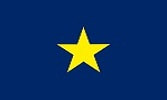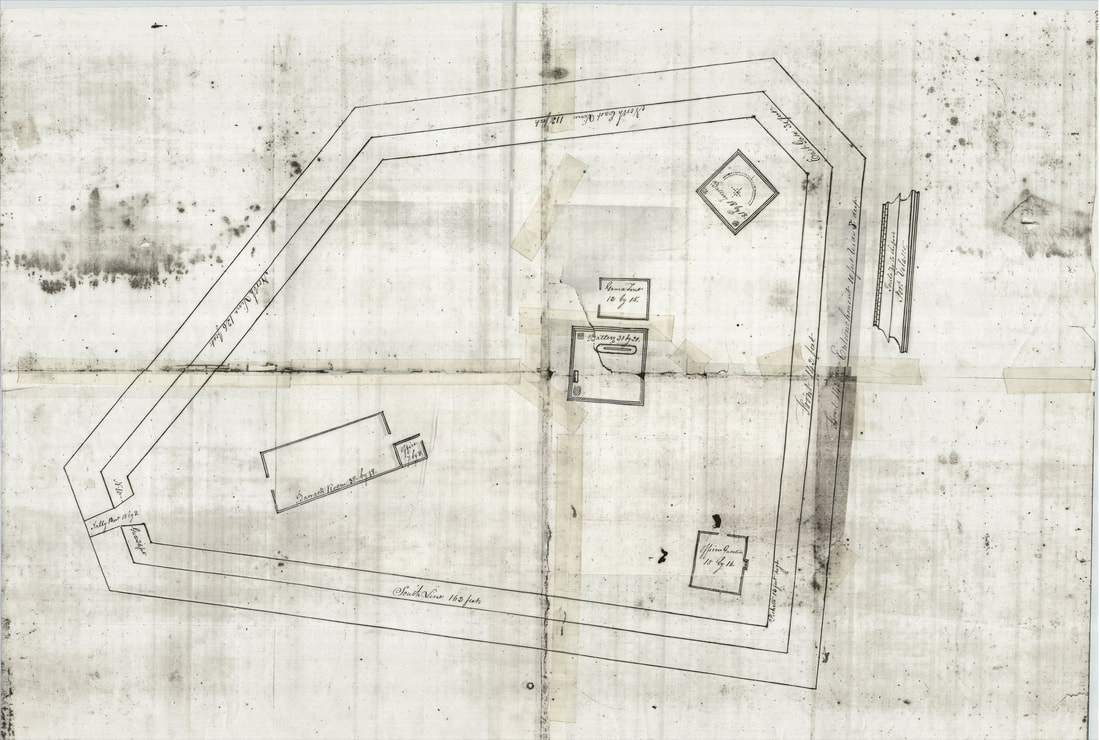The Texan Fort Velasco (1835-1840)
|
In the aftermath of the San Felipe Incident, there is some evidence that a fort of some sort was hurriedly prepared at Velasco in the Fall of 1835, largely through private efforts of the trading firm of McKinney, Williams & Co. Thomas F. McKinney wrote on 24-Oct-1835 that “… we have this evening completed the mounting on our fort at Velasco a most superior long 18 pounder besides some other smaller pieces …“ and again on 29-Oct-1835 that “The Mexican cruiser is off this place, has been seen yesterday & the day previous fired one shot at Velasco which fell short of the shore, four at her were fired from shore, none however took effect, it has made her less bold in her movements … You would doubtless say by all means go and take her, so we say and so we will endeavor to do at all hazards.” |
|
Since no fortifications other than the 1832 fort are known to have existed yet at Velasco, it is entirely possible that McKinney first mounted these cannon there, and the Harkort drawing from Feb-1836 (above) perhaps shows a refurbished 1832 fort. The battery of artillery was apparently placed in a new more-substantial earthen embankment or fort at Velasco at some point after Feb-1836, when an address was published by the Brazoria Committee Of Safety calling for aid in erecting a new fort at Velasco - perhaps according to the diagram found in the Nacogdoches Archives (right). Capt. George W. Poe commanded troops at Velasco, writing on 3-Mar-1836 “I have received letters from the Citizens beseeching me not to remove the troops from here .... they have offered to work with hands and oxen in the Construction of Batteries & mounting the Cannon – moreover there is a large supply of arms ammunition & Clothing here which without troops cannot be protected ...”. |
|
Link to written details on the above diagram
A group of volunteers under Thomas B. Bell arrived in late March and agreed to defend Velasco. Robert Potter, the appointed Secretary Of The Navy by the provisional Texas government, wrote to Bell on 31-Mar-1836, saying “The offer of service by yourself and friends to fortify and defend Velasco is accepted, and as soon as communication can be had with other members of the Government, a Captain’s commission will be sent to you to authorise you to organize your friends into a company and be constituted a part of the army of the Republic of Texas. Genl. Hall will return to Velasco as soon as he is informed of the stand you have taken; but in the meantime you are requested and authorised to take command and proceed immediately to collect laborers, teams &c for constructing fortifications …. Col. Edwd. Harcourt an experienced and scientific engineer has been ordered to Velasco and Galveston to superintend the construction of fortifications at those respective points – in all matters therefore relating to that branch of the public service at Velasco, Col. Harcourt will have the command.” Bell responded on 12-Apr-1836, writing “We are pressing forward, in the operation of the Fort …”. |
|
The location of the Republic of Texas fort can be seen in the 1837 plat map of Velasco (above and right), labeled as "Battery" in Block 61 at the extreme corner of the Brazos and the Gulf. Since the 1832 fort was described as being some distance from the river and beach (probably in Block 13 or Monument Square), it can be seen the 1836 battery or fort was at a separate but nearby location. This battery was apparently still in operation in 1840, when a visitor from the British diplomatic service described that it “…had an old brass 18-pounder with a touch-hole equivalent to the circumference of the mouth of Mrs. Sharp(e) – and 3 other small ones whose united ages amount to a greater number, than my arithmetic (which is fair to say was neglected in my youth) will permit me to calculate …“ |
|
An interesting document was found in the James Morgan Papers at the Galveston & Texas History Center at the Rosenberg Library (Galveston, Texas), known there as Manuscript 31-0249. It is a handwritten note from Francis J. Haskins (known to have been a pilot at the mouth of the Brazos prior to this point) to James Morgan, apparently asking that his account be settled for building the 1836 fort. As best as we can decipher, the note says "Dear Sir, Mr. Bell informs me that Mr. White(more?) has left the accounts and expences of the Building of the fort at Velasco with you. Mr. Whitemore was acting as Clerk considerable towards said fort and Capt. Bell tells me to call on you for my account. You will do me a favour to draw of my account and hand it to Mr. Wray as I request to get the Business settled. yours Respectfully, Francis J. Haskins, Velasco 13th July 1836". In the lower portion, James Morgan apparently wrote a note about his reply, which is not entirely clear, but seems to say "Answered on the 16th enforming him that Mr. W. had never _____ ____ the _____ or papers ____, the building of the fort and that I am entirely ignorant of the matter. by J. Morgan, Col(onel) C(om)m(an)d(ing)". The value of this document is that it seems to show when the fort was completed. This document has a sad story associated with it. The original document has disappeared from the Rosenberg Library, apparently having been stolen at some point in the past. Fortunately, a microfilm copy had been made prior to its theft, and that is what is displayed to the left. It just goes to show you what a valuable service that our archives and archivists serve, and the utter callousness of those thieves of our history! |
A man named Buegel served as a soldier at the fort in the period of 1836-1837, and he said “I served for sixteen months with the soldiers in Velasco. Our captain’s name was Snell. We had to guard the fort since the Mexicans were trying to land. From the fort, which was three hundred paces from the shoreline, we could, during the day, see three ships in the telescope. That was in May 1837.” Snell was apparently Capt. Martin K. Snell of Company E, 1st Regiment of the Army Of The Republic Of Texas; this unit moved to Velasco in Sep-1836. Buegel also describes night-time sentry duty along the beach two miles from the fort, and that he scared off an attempt by three Mexican longboats to come ashore. He also describes a sea battle off Velasco, perhaps the incident where the Independence was defeated by Vencedor del Alamo and Libertador on 17-Apr-1837, capturing William H. Wharton who was a passenger. Buegel also described the poor state of morale in his unit, ultimately leading to the burning of a barracks building.
A narrative report that discusses all of the research on
the several Forts Velasco is available at the link below:
<<< The San Felipe Incident < click for other pages > The Drawings of Eduard Harkort >>>
Background wallpaper is from 1836 version of "Map of Texas - With Parts of the Adjoining States" by Stephen F. Austin, printed by H. S. Tanner of Philadelphia
Background wallpaper is from 1836 version of "Map of Texas - With Parts of the Adjoining States" by Stephen F. Austin, printed by H. S. Tanner of Philadelphia


















